|
Advertisement / Annons: |
Blood Moon
|
| Object : | Moon |
| Object size : | 0.5 degree |
| Object magnitude : | - |
| More to know : |
Wikipedia: https://en.wikipedia.org/ wiki/ Moon |
|
In Sweden it isn't possible to take astronomy photos during the summer normally. But it works for the Sun and the Moon and now in late July, the 27th, there will be a Lunar Eclipse. Some people call it Blood Moon because of the red shine from the Moon during the eclipse. And it's more, our planet Mars will be almost in its closest position (oppositions) to Earth and it will also be in a very close angle to the Moon, just two degrees. Here are some Wikipedia links with more information: We went out to the summer house a day before to prepare our equipment and do some test photos of the "normal" Moon. The Moon is just 10 degrees above the horizon and we must check that we have a clear view in south direction to the Moon and maybe Mars. Mars is about two degrees below the Moon. You only get an opportunity like this once a life time. And the last two months we have had many nights with a clear sky. |
|
26 July, 2018 UT: 21:54, southern direction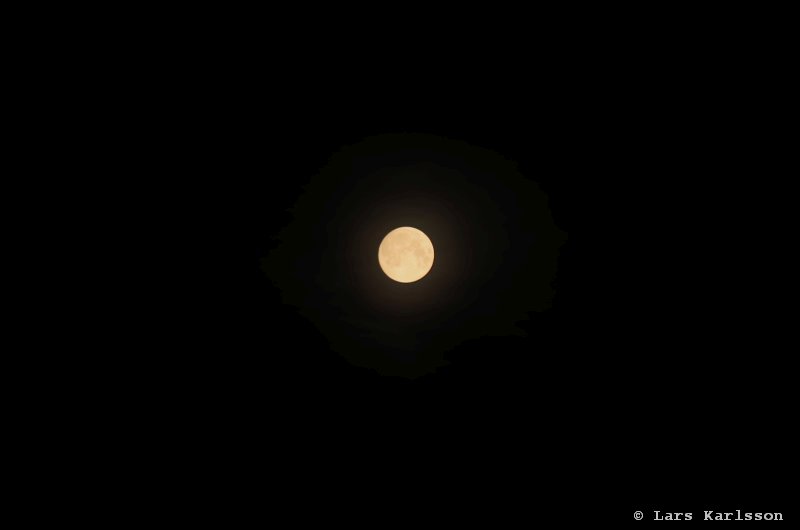 |
|
|
After some hours the Moon was well above the horizon, about ten degrees here at our place. The tree tops are about 7 degrees above the horizon in this southern direction. I just use a simple tripod and my 150 mm f 2.8 Sigma APO lens connected to a full frame Canon 6D. The image field will cover the Moon and Mars at the same time. My plan is to do a time lapse movie over this Lunar eclipse. With full moon the day before the Lunar eclipse my setting are: ISO 200, exposure time 1/125 second and the aperture f/4. |
|
26 July, 2018 UT: 22:00, southern direction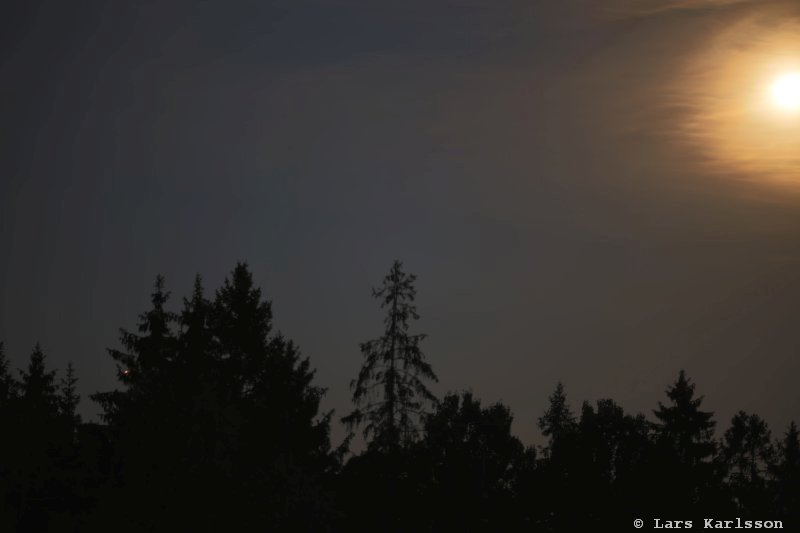 |
|
|
We also need to know what exposure setting we need to catch Mars and if we where possible to see it from here, just eight degrees above the horizon. The trees grow higher for each year. Mars need more exposure, ISO 200, exposure time 4 seconds and aperture set to f/3.2. With this exposure the Moon will be over saturated. You see Mars to the left in the edge of the second tree. Next night the Moon and the Mars will be on line above each other. |
|
27 July, 2018 UT: 19:11, southern direction |
|
|
Now is the big Blood Moon night and we are siting on our hill and waiting for the sunset. We have a clear sky and it look promising, we thought. When the Moon came above the horizon we got clouds! Hopeless, just to pack our stuff and cancel, or? We waited more then one hour and then suddenly the clouds disappear and we got a clear sky all the way down to our local 7 degree horizon. |
|
27 July, 2018 UT: 21:08, southern direction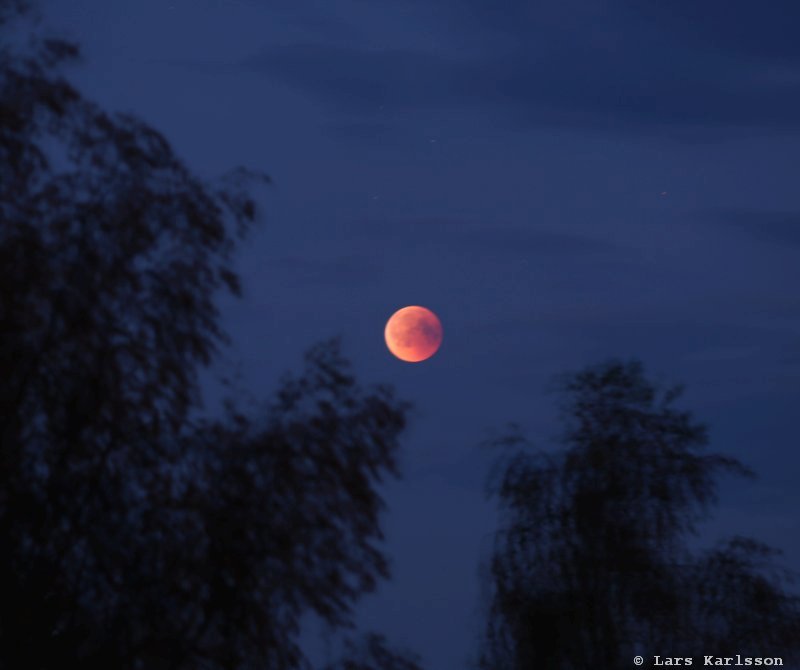 |
|
|
At last, the Moon rise above the tree tops and the sky is clear. Camera setting ISO 200, 10 seconds and f/4. Now we understand the expression Blood Moon. This was at the last minute we got a cloud free sky, it's just a few minutes left of the full eclipse. Now we can follow the eclipse from here to when it disappear two hours later. |
|
27 July, 2018 UT: 22:10, southern direction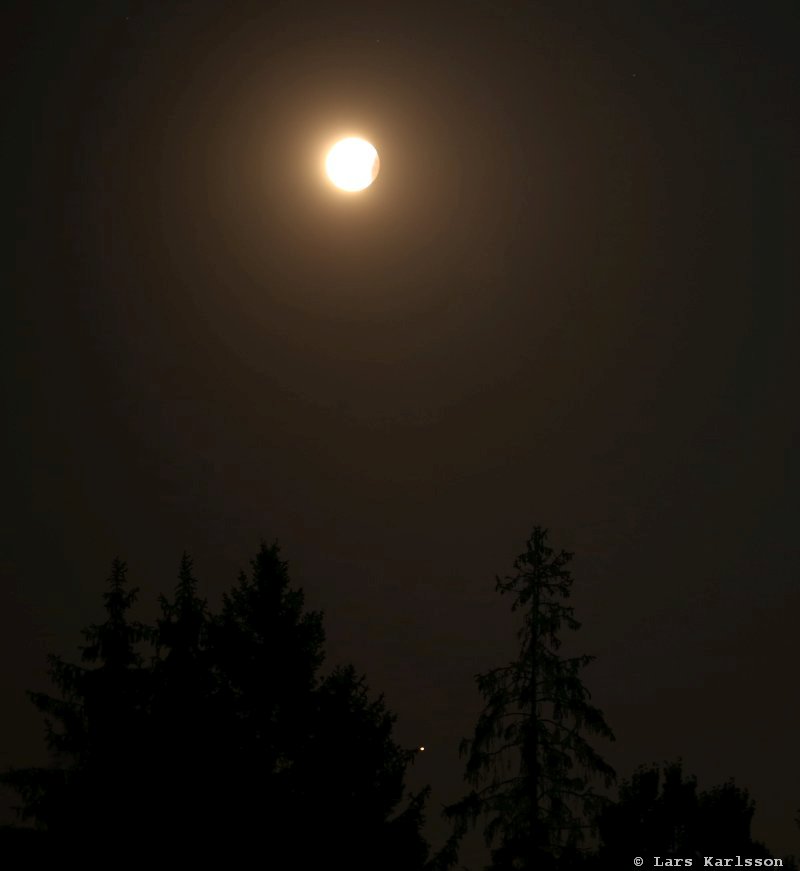 |
|
|
We have to wait one more hour to see Mars rise above the tree tops. Now the eclipse is almost over, you only see the thin shade of shadow on the right edge of the Moon. |
|
27 July, 2018 UT: 23:27, southern direction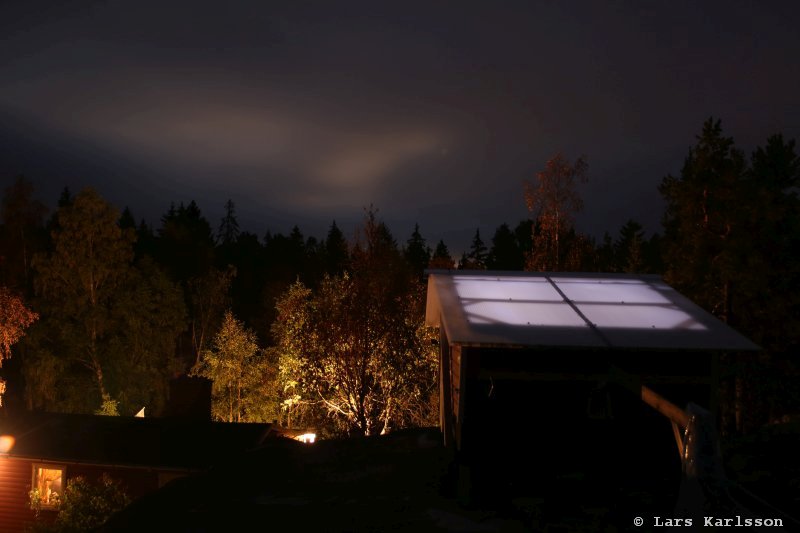 |
|
|
Just a few minutes after the eclipse has ended the clouds came back. The eclipse lasted about four hours and we could use two of this hours to photographing. The building to the right is the observatory. It had a lot of condensation on the outside of the ceiling, but inside it was very dry. I have 400 photos from this event, below there is a link to a time lapse movie from them. We also saw a bright satellite passing by during the Lunar eclipse, now we know it was the ISS space station. |
|
27 July, 2018 UT: Moon video from stillsTo get it in full screen, click on the square button in the lower right bottom. |
|
|
| Go Back |